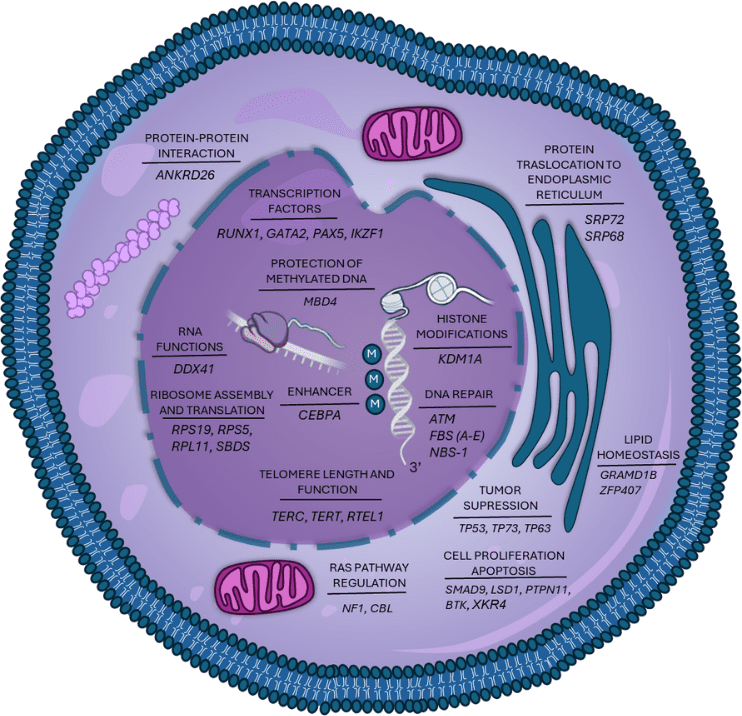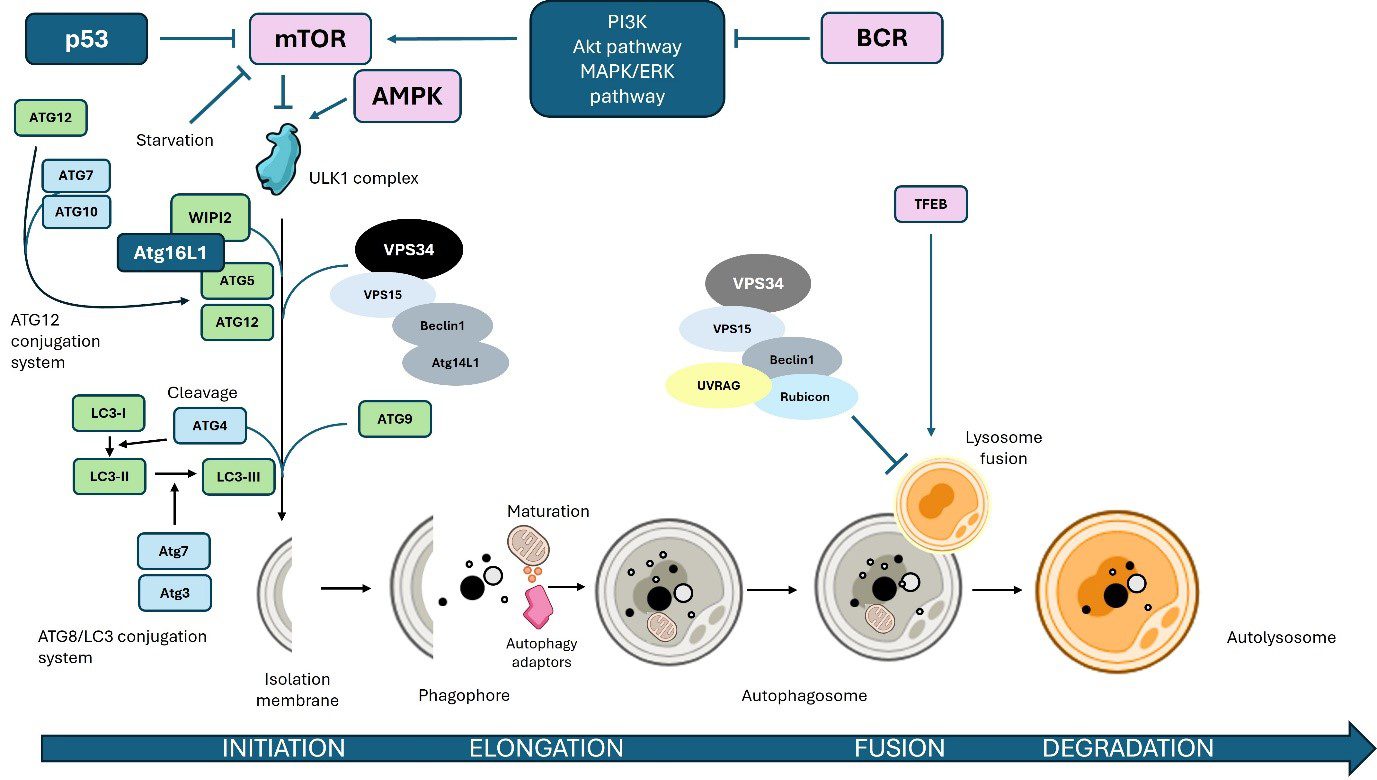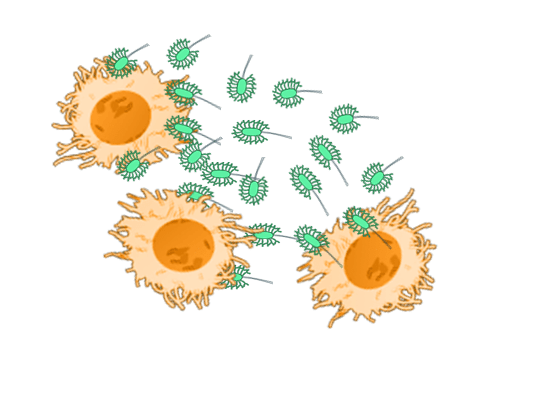The incidence of this infection has increased in recent years due to the use of potent immunosuppressants and immunomodulatory drugs and currently continues to have a high morbidity and mortality rate worldwide, especially in immunocompromised patients and those undergoing hematopoietic precursor transplantation. Although several risk factors related to the development of IA (defects in phagocyte function, the use of corticosteroids and broad-spectrum antibiotics, prolonged neutropenia induced by chemotherapy, as well as the existence of previous episodes of infection) have been identified in recent decades, it is still extremely difficult to prevent and diagnose this infectious disease at an early stage. Epidemiological studies have shown that onco-hematological patients with the same underlying pathology and similar risk factors and clinical conditions have very different degrees of susceptibility to invasive fungal infections such as IA, suggesting the existence of a genetic predisposition to develop this type of disease. This fact, together with the difficulty of diagnosing invasive fungal diseases in their early stages, shows the enormous usefulness of identifying genetic biomarkers that would allow us to predict which patients are potentially susceptible to infection, as it would give us the opportunity to design an appropriate prophylactic strategy for each patient.
In the context of an international consortium, AspBIOmics, our research group is developing this line of research based on the study of large-scale genetic polymorphisms and the development of functional assays for the identification of genetic biomarkers that, according to our starting hypothesis, condition the degree of susceptibility and response to antifungals. In this consortium the efforts are not only oriented to the search for genetic biomarkers that allow predicting susceptibility or response to drugs but we also try to evaluate a series of assays for the detection of elements of the Aspergillus fungus (RNA, polysaccharides or proteins) or the patient (cytokine profile, chemokines, etc …) in a multiparametric strategy that we hope will allow us to characterize the disease for the subsequent development of reagents and / or commercial kits. More detailed information on the activity we are developing, as well as on the scientific groups that are part of this initiative, can be found on our consortium’s web page (www.aspBIOmics.eu).
Line 4: Genetics of solid tumors: Colorectal, pancreatic and prostate cancers
Colorectal, prostate, and pancreatic cancers are three significant types of cancer affecting different tissues. Colorectal cancer is one of the most common cancers worldwide, with an estimated 152,810 new cases and 53,010 deaths expected in the United States in 2024. It is the second leading cause of cancer death in the U.S., and regular screening, particularly colonoscopy, can detect early-stage cancer and prevent its development by removing precancerous polyps. Symptoms may include changes in bowel habits, blood in stool, abdominal pain, and unexplained weight loss, with risk factors including family history, hereditary conditions, and a personal history of polyps. Prostate cancer, the second most common cancer affecting males after skin cancer, develops in the prostate gland and affects about 13 out of 100 males in their lifetime. Early-stage prostate cancer rarely causes symptoms, and risk factors include age, race, and family history, with treatment options varying by stage and potentially involving surgery, radiation, or hormone therapy. Pancreatic cancer, though less common, is known for its aggressive nature and poor prognosis, and is linked to a family history of pancreatic cancer, which also increases the risk of other cancers like breast, ovarian, colon, prostate, liver, and bile duct cancers.
Research has shown connections between these cancers that share common risk factors, particularly genetic predisposition and family history, making regular screenings and a healthy lifestyle essential for early detection and prevention. Although in the last decades primary surgical strategies for solid tumors have evolutionarily changed and have markedly improved both short and long-term disease outcomes, a high proportion of patients still experience severe disease relapses leading to short periods of overall survival (OS). Moreover, it is important to note that these cancers are characterized by a marked degree of heterogeneity with patients presenting very stable diseases to patients with rapidly progressive diseases who are destined to succumb in a short time. Because of this great heterogeneity, several years of treatment are often required, so that the economic costs of caring for cancer patients are usually extremely high. There are currently no clinical tools that consider the heterogeneity in the clinical course of these cancers, which severely limits opportunities for early intervention and prevention. In this discouraging context, it is urgent to define new approaches to identify new molecular biomarkers for the development of “genetic/genomic scores” for diagnosis and prognosis to predict the development of these diseases and to implement new therapeutic strategies that are more individualized and economically feasible.
OTHER AREAS OF INTEREST
Genetic basis of rheumatoid arthritis and ankylosing spondylitis
Rheumatoid arthritis (RA) and ankylosing spondylitis (AS) are chronic inflammatory diseases that affect the joints, but they differ in various aspects such as age of onset, gender prevalence, and genetic associations. AS typically begins earlier, around 28 years, compared to RA, which usually starts between 40-50 years, and AS predominantly affects males, while RA is more common in females. The genetic associations of these diseases are significant, as 95% of AS patients are HLA-B27 positive, whereas 60% of RA patients are HLA DR4 or DR1 positive, highlighting the importance of genetic analysis in diagnosis and treatment. RA primarily affects peripheral joints like the hands and feet, while AS mainly impacts the spine and sacroiliac joints, with potential involvement of larger joints. RA shows bone resorption with erosive changes in radiographs, whereas AS is characterized by bone formation with vertebral syndesmophytes. Both diseases present different symptoms, with RA causing joint pain, swelling, stiffness, and fatigue, and AS causing lower back and hip pain that improves with exercise. Genetic testing plays a crucial role in confirming diagnoses, as it helps differentiate between these conditions and guides treatment. While NSAIDs and TNF-alpha blocking drugs are effective for both conditions, DMARDs are important in RA but have limited use in AS. To date, several genetic markers have been identified as associated with response to DMARDS and anti-TNF drugs, which confirms the importance of genetic testing in the management of patients.
The co-occurrence of both diseases is rare but has been observed, and patients with both often display more severe symptoms and radiological changes. Even though RA and AS share some characteristics as chronic inflammatory diseases, they have distinct genetic links, clinical presentations, and responses to treatment, which underscores the need for precise genetic testing to ensure effective management.
The genetic factors involved in the triggering of RA and AS have been the subject of intense research but, to date, only a few studies have investigated the relationship between the presence of genetic alterations and gender-associated differences in susceptibility to these diseases. With these facts in mind, our research group is focused on identifying gender-associated genetic variations in immune system genes that are associated with an increased risk of developing RA and AS. In addition, our group is studying overlapping genetic factors and whether the interaction of genetic alterations and environmental factors modulates the risk of developing both diseases.




